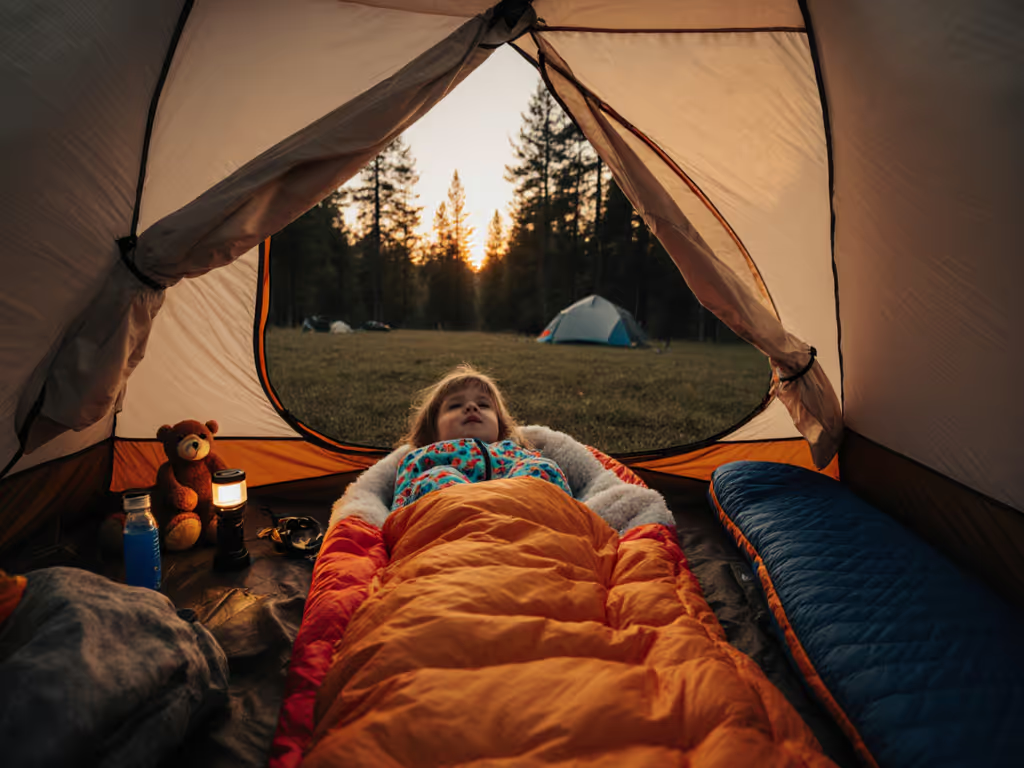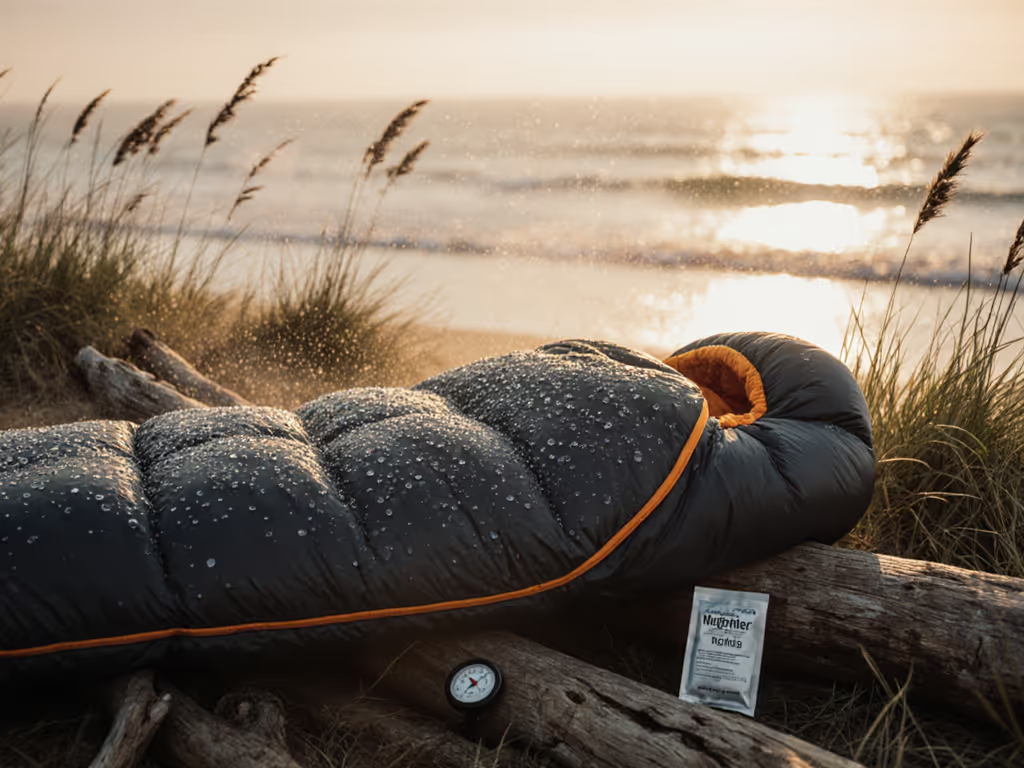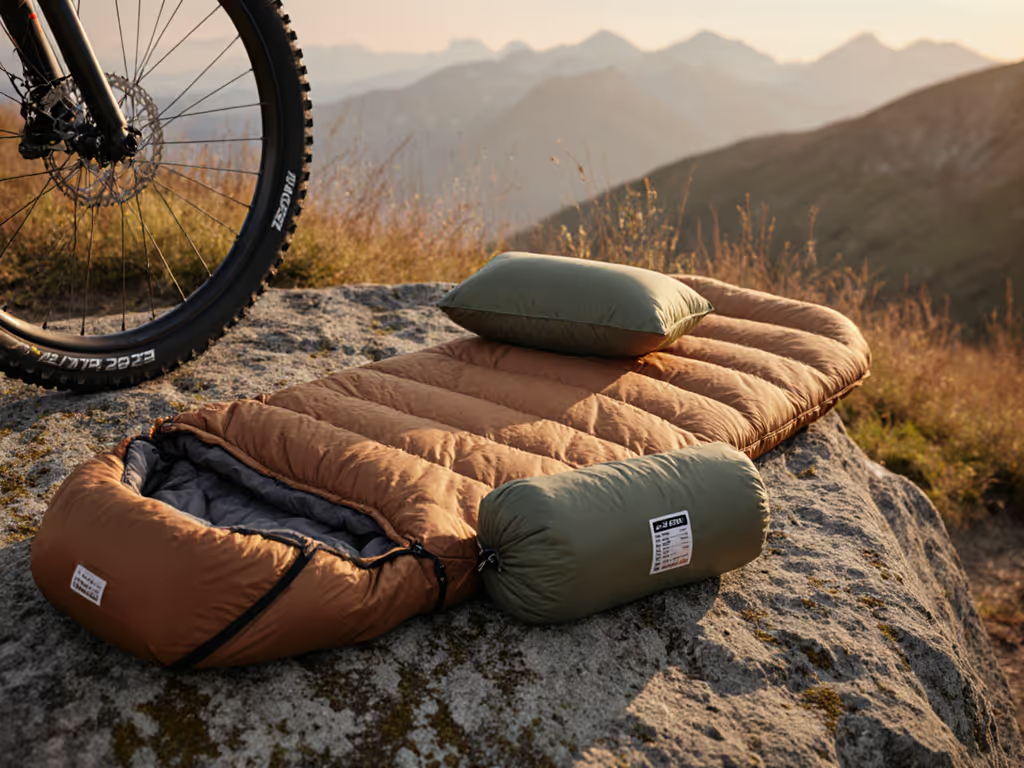
The Ultimate Guide to Eco Friendly Sleeping Bag Options for Campers: Types, Materials, and Sustainability Tips
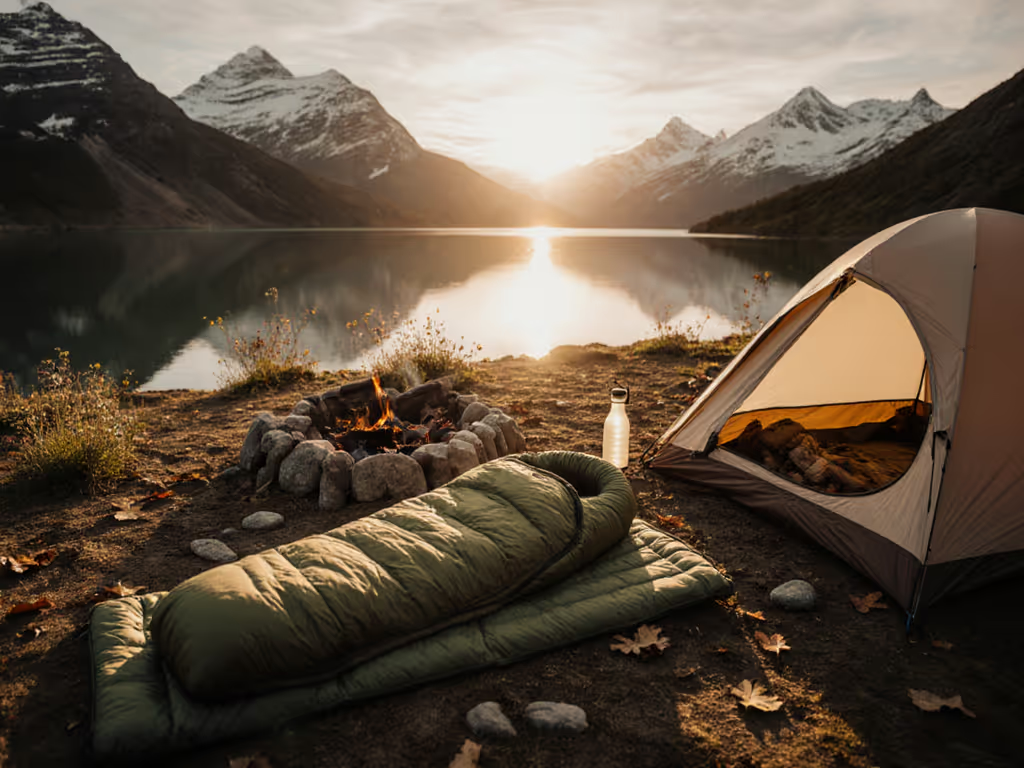
When you start researching eco friendly sleeping bag options for campers, it is easy to get lost in technical jargon, materials claims, and lab charts. Yet your real question is simple: which bag will keep you warm, dry, and comfortable in the conditions you actually camp in, while minimizing environmental impact. This guide breaks down the types, materials, ratings, and sustainability essentials in plain language, and it highlights how Backpacker Sleep explains ISO (International Organization for Standardization) lab results so you can translate numbers into real nights of better sleep. By the end, you will understand how to balance warmth, weight, durability, cost, and planet-friendly choices without guesswork.
Eco Friendly Sleeping Bag Options for Campers: What to Know
Let us start with a quick framework: sustainability is not one thing, it is a balance of material sourcing, chemical safety, durability, repairability, and end-of-life pathways. A sleeping bag that lasts 10 seasons often beats a “green” but flimsy option that needs replacing after two, because longevity spreads the environmental footprint across many trips. For model recommendations that prioritize recycled materials, PFAS-free DWR, and real trail performance, see our trusted eco-friendly sleeping bags. Recycled synthetics cut reliance on virgin petroleum, while responsibly sourced down delivers unmatched warmth-to-weight with strong animal welfare standards, and plant-based fibers add breathability plus low-impact farming in some cases. The smartest choice matches your climate and sleep style first, then optimizes materials and treatments to reduce harm without sacrificing safety or comfort.
Backpacker Sleep exists to bridge the gap between lab charts and trail reality, because numbers alone can mislead when wind, humidity, and ground insulation vary night to night. Our guides explain ISO (International Organization for Standardization) 23537 comfort and limit ratings, show how R-value (thermal resistance) from your pad interacts with your bag, and decode water-repellent treatments that avoid PFAS (per- and polyfluoroalkyl substances). The result is a set of practical rules you can apply in minutes: add a warm pad on cold ground, choose synthetic fills for persistently wet climates, pick recycled down when you prioritize packability, and consider plant-based liners if your skin is sensitive or you prefer natural fibers.
- Prioritize warmth and safety first, then optimize sustainability without compromising your needs.
- Match insulation type to climate: damp equals recycled synthetic, dry and cold often favors responsible down.
- Look for credible standards such as RDS (Responsible Down Standard) and GRS (Global Recycled Standard) alongside fluorine-free DWR (durable water repellent).
- Plan for repair: a patchable shell and replaceable zipper extend life and slash footprint according to LCA (life cycle assessment) models.
Insulation Types Compared: Down, Recycled Synthetic, and Plant-Based
Insulation is the engine of every sleeping bag, and your choice dramatically influences performance, packed size, and sustainability. Responsibly sourced down excels for cold, dry trips because its loft traps a lot of heat for very little weight, but it loses performance when soaked unless treated and protected. Recycled synthetic fibers shine when humidity, condensation, or multi-day rain are common, because they retain warmth when damp and dry faster, though they weigh more for the same warmth and pack larger. For a deeper look at tradeoffs in wet conditions, check our down vs synthetic sleeping bags test. Plant-derived and natural-fiber blends such as hemp, wool, and organic cotton liners bring breathability, moisture buffering, and low-chemical contact for sensitive skin, but they are typically paired with down or synthetic fills rather than serving as the primary high-loft insulation.
Watch This Helpful Video
To help you better understand eco friendly sleeping bag options for campers, we've included this informative video from MyLifeOutdoors. It provides valuable insights and visual demonstrations that complement the written content.
From a sustainability lens, third-party standards and recycled content percentages matter more than marketing buzzwords. Look for RDS (Responsible Down Standard) to verify animal welfare and traceability in down, and consider recycled down for circularity that reduces waste. For synthetics, GRS (Global Recycled Standard) helps validate reclaimed input materials and track chemical management, while bluesign (bluesign system) approved textiles indicate responsible chemistry over the fabric’s lifecycle. Industry data suggests recycled polyester can reduce energy use by roughly 30 to 50 percent compared with virgin fiber, and responsibly sourced down can outlast synthetics if maintained carefully, which spreads environmental cost across more years of use.
Insulation Options at a Glance
| Insulation Type | Warmth-to-Weight | Wet Performance | Packing Size | Sustainability Notes | Best For |
|---|---|---|---|---|---|
| RDS (Responsible Down Standard) Down or Recycled Down | Excellent | Fair without protection | Very compact | Animal welfare and traceability; recycled down supports circularity | Cold, dry trips, weight-sensitive backpacking |
| Recycled Synthetic Fibers | Good | Good to very good | Moderate to large | GRS (Global Recycled Standard) validates recycled content and allows robust chemical controls | Wet climates, shoulder seasons, budget-friendly choices |
| Plant-Based or Natural Fiber Blends (hemp, wool, organic cotton liners) | Supplemental | Good moisture buffering | Varies | Lower chemical load, biodegradable fibers, often organic farming | Comfort-focused liners, skin-sensitive users, mild climates |
Shells, Liners, and Treatments: Materials That Respect the Planet
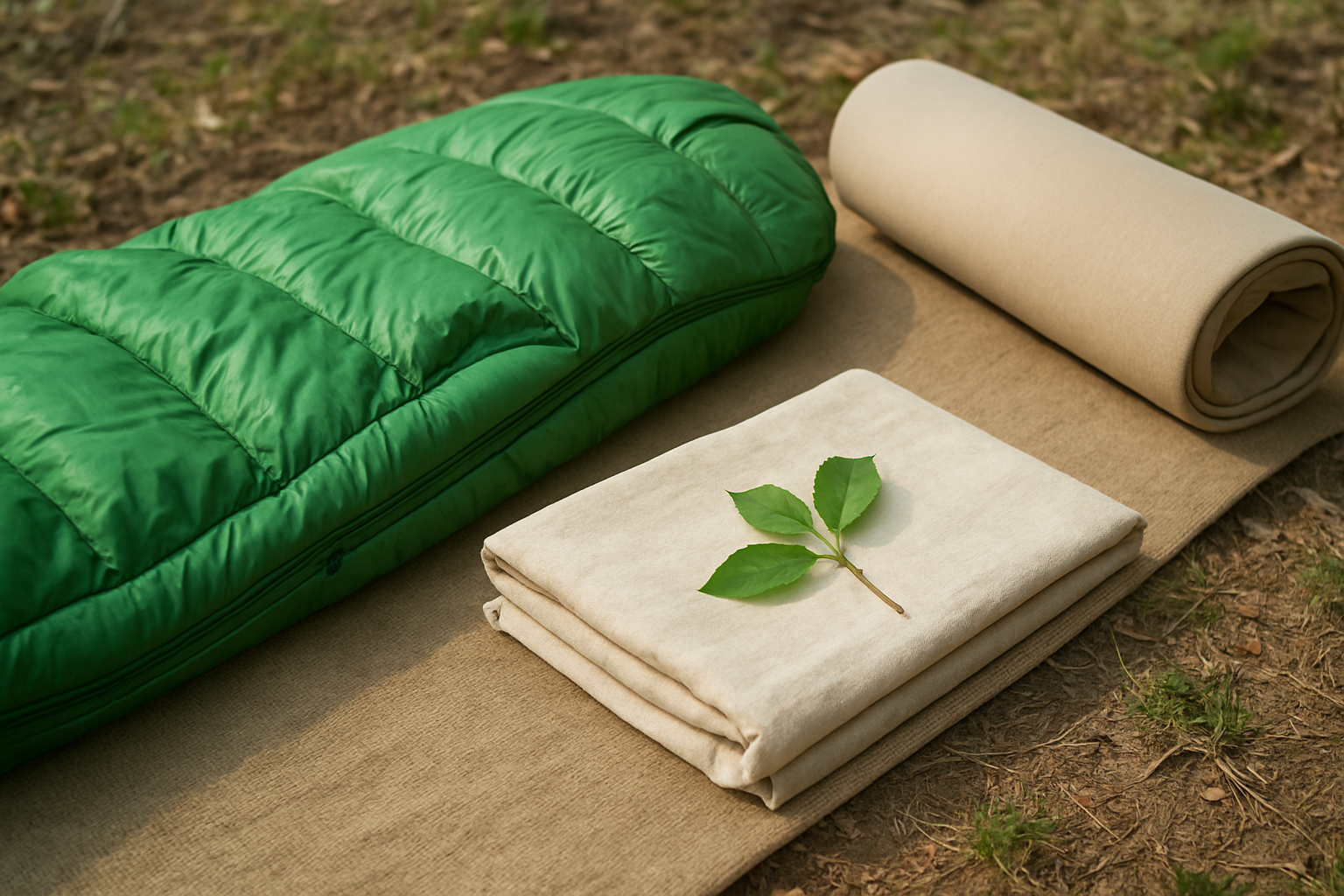
Your shell fabric, liner, and water-repellent finish determine durability, next-to-skin feel, and how well the bag resists dew, condensation, and tent drips. Recycled nylon or polyester shells strike a sweet spot of abrasion resistance and circularity, while organic cotton and hemp liners add comfort and moisture management for summer or shoulder-season use. Chemical topics matter here: many older durable water repellent coatings used PFAS (per- and polyfluoroalkyl substances) because they were highly effective, but these chemistries persist in the environment. Today, high-performing fluorine-free alternatives can deliver solid water beading without the long-lasting ecological drawbacks, especially when combined with smart shelter ventilation and a dry bag strategy.
Backpacker Sleep’s materials guides go beyond labels to explain how denier counts, ripstop patterns, and liner weaves affect both durability and perceived warmth. A lighter, tighter weave can feel warmer because it reduces convective heat loss, even if the insulation is unchanged, and a brushed liner can reduce clamminess on humid nights by increasing moisture diffusion across the fabric. We also show how to spot meaningful eco-certifications like bluesign (bluesign system), GRS (Global Recycled Standard), and OEKO-TEX (OEKO-TEX Standard 100) and how to maintain fluorine-free DWR (durable water repellent) with gentle wash-in or spray-on renewers, which helps extend product life and maintain performance without reverting to legacy chemistries.
Common Fabric and Treatment Choices
| Component | Eco-Preferred Options | What to Look For | Notes |
|---|---|---|---|
| Shell | Recycled nylon or polyester | GRS (Global Recycled Standard), bluesign (bluesign system) | Balance denier for durability vs weight; ripstop for tear resistance |
| Liner | Organic cotton, hemp blends, recycled polyester | OEKO-TEX (OEKO-TEX Standard 100) for low chemical residues | Choose breathable weaves to reduce clamminess |
| Water Repellency | Fluorine-free DWR (durable water repellent) | PFAS (per- and polyfluoroalkyl substances)-free claims with test backing | Reapply periodically; pair with good shelter ventilation |
Making Sense of ISO (International Organization for Standardization) Ratings and Real-World Warmth
Temperature ratings cause confusion because lab tests assume a specific mannequin, base layers, and a precise sleeping pad R-value (thermal resistance). ISO (International Organization for Standardization) 23537 gives three key numbers: Comfort, Limit, and Extreme, and they are useful benchmarks if you adjust for your physiology, pad, shelter, wind, and humidity. Many backpackers sleep colder than the lab’s reference male, and wind plus conductive ground loss can eat into your margin, especially if your pad’s R-value (thermal resistance) is low. Backpacker Sleep simplifies the translation by combining rating plus pad plus climate into a suggested “real-world range,” then we annotate how moisture or altitude might shift the experience a few degrees in either direction. If you want the full breakdown of standards and field results, start with temperature ratings explained.
Here is how to use the numbers quickly in the field: start with the Comfort rating if you sleep cold, or Limit if you sleep warm; add insulation under you through a higher R-value (thermal resistance) pad on cold ground; and guard the bag’s loft with dry compression and quick shelter setup. In dry alpine cold, a responsibly sourced down bag near your target Comfort rating performs brilliantly with minimal weight, while marine fog, rain, or shoulder-season storms favor recycled synthetics that maintain loft after damp nights. With just a few adjustments, a chart becomes a plan that respects your body, your gear system, and the weather you actually encounter.
ISO (International Organization for Standardization) 23537: What the Ratings Mean
| Rating | Lab Definition | Who Should Use It | Adjustments to Consider |
|---|---|---|---|
| Comfort | Temp at which a cold sleeper can rest comfortably | Most people, especially those who sleep cold | Reduce by 3 to 5 C if your pad R-value (thermal resistance) is below target; add layers if windy |
| Limit | Temp at which a warm sleeper remains comfortable in curled position | Warm sleepers and weight-focused users | Select only if your pad matches season and shelter blocks wind |
| Extreme | Survival-only benchmark | Do not plan trips at or below Extreme | Choose a warmer bag; safety margin matters more than grams |
- Pick the Comfort or Limit rating based on your known sleep profile.
- Match your pad’s R-value (thermal resistance) to the coldest expected ground temps.
- Account for humidity and wind; high moisture penalizes down and favors synthetics.
- Verify fit: a bag that is too tight crushes loft and feels colder.
Fit, R-Value (thermal resistance), and Humidity: Comfort You Can Measure
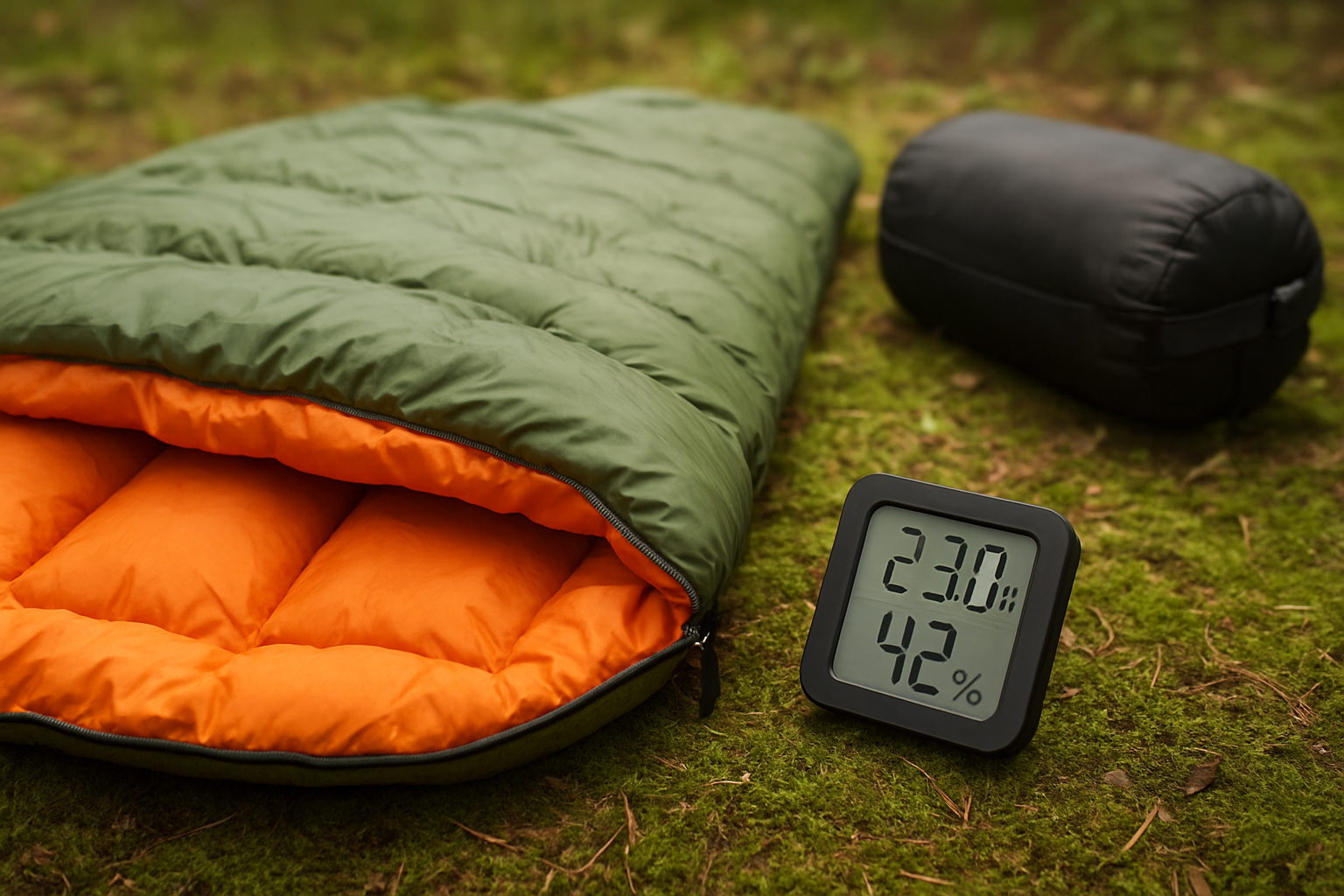
Fit is a stealth variable because it changes thermal performance without changing materials. A bag that is too large creates dead air you must heat, while one that is too tight compresses insulation and restricts circulation, producing cold spots. Aim for a trim mummy or semi-rectangular cut that lets you flex knees and rotate shoulders without flattening baffles, and make sure the draft collar and hood seal but do not choke airflow. Backpacker Sleep’s fit primers explain shoulder, hip, and footbox dimensions and how they map to your build, so the bag you choose keeps loft intact and warmth stable across the night rather than spiking hot then crashing cold at 3 am. For exact measurements and how they affect warmth, use our sleeping bag size guide.
Underneath, your pad’s R-value (thermal resistance) defines how much heat you lose to the ground, which is why a warm pad can make a “too cold” bag feel just right. Practical rules help: winter backpacking usually starts around R 5 and up, three-season ranges from R 2.5 to 4 depending on elevation, and summer can dip lower if nights are warm. Humidity adds another layer because moisture robs loft and can trick your skin into feeling clammy; vent with the zipper, keep the headspace breathable, and consider a breathable liner to buffer condensation. These system-level tweaks are low-cost ways to raise comfort while keeping your sustainability goals intact.
Suggested Minimum Pad R-Value (thermal resistance) by Season
| Season | Backcountry Nights | Recommended Minimum R-Value (thermal resistance) | Notes |
|---|---|---|---|
| Summer | 15 C to 25 C lows | R 1.5 to 2 | Go higher at elevation or on cold rock |
| Three-Season | 0 C to 10 C lows | R 2.5 to 4 | Pair with a liner for extra margin |
| Winter | Below 0 C lows | R 5+ | Closed-cell foam plus inflatable is a robust combo |
Real-World Mini Scenarios
- Coastal rainforest shoulder season: recycled synthetic mummy with fluorine-free DWR (durable water repellent) shell, Comfort rating near expected lows, and R 3 to 4 pad.
- High desert winter: RDS (Responsible Down Standard) down bag at Comfort rating with draft collar, vapor barrier liner only if you know the technique, and R 5+ pad.
- Family car camping in summer: rectangular recycled synthetic bag with organic cotton liner for comfort, R 2 pad, and lots of venting options.
Your Sustainability Action Plan: Buy Smart, Care Well, Repair, Recycle
Think of sustainability as a loop you can influence at every stage: buy what you need and will use for years, take care of it between trips, repair before replacing, and choose end-of-life options that recover materials. Buying smart means matching your main climate to insulation type, verifying third-party standards, and prioritizing durable construction like robust zippers, well-stitched baffles, and repair-friendly shells. Care is simple but powerful: wash gently with down-safe or synthetic-safe detergent, dry thoroughly to restore loft, and store loosely at home to avoid compression set. Follow our step-by-step sleeping bag care and maintenance to preserve loft and extend lifespan. When a snag or puncture happens, field-repair with a patch and later do a proper fix; every season of added life defers new production, which LCA (life cycle assessment) studies associate with meaningful carbon savings.
Backpacker Sleep provides checklists, video walkthroughs, and repair how-tos so you can extend the lifespan of the gear you already own. We also maintain roundups of brands that accept trade-ins or run certified refurbishment, plus we explain how to evaluate local textile recycling if your bag is truly end-of-life. Small actions compound: swapping from PFAS (per- and polyfluoroalkyl substances)-based DWR (durable water repellent) to fluorine-free options, consolidating orders to reduce shipping impacts, and lending out a bag rather than buying an extra all reduce footprint while building community. Over time, your sleep system becomes both dialed for comfort and easier on the places you love to camp.
High-Impact Sustainability Moves
| Action | Why It Matters | Impact Snapshot | Pro Tip |
|---|---|---|---|
| Choose recycled content and credible standards | Reduces virgin resource extraction | Recycled polyester often cuts energy 30 to 50 percent vs virgin | Look for GRS (Global Recycled Standard), RDS (Responsible Down Standard), bluesign (bluesign system) |
| Maintain DWR (durable water repellent) and store uncompressed | Preserves performance and loft | Extends lifespan by seasons, lowering annualized footprint | Air-dry fully and tumble with clean tennis balls to restore loft |
| Repair before replacing | Avoids new manufacturing impacts | A patch can defer replacement for years | Carry tenacious tape and a tiny needle kit on trips |
| Optimize pad R-value (thermal resistance) | Lowers need for heavier bag | System efficiency can save 100 to 300 grams | Stack a foam pad under an inflatable in winter |
How Backpacker Sleep Makes Decisions Easier
Many backpackers struggle to balance warmth, weight, and comfort, especially when confronted with lab ratings that feel abstract. Backpacker Sleep solves this by publishing comprehensive reviews on sleeping bags for various conditions, side-by-side comparisons of down vs recycled synthetic for climate-specific trips, and plain-English explainers that translate ISO (International Organization for Standardization) and lab measurements into real-world warmth. Our testers note how cut, baffle design, and zipper draft tubes impact temperature stability, then we summarize with checklists that tell you exactly who will love each bag and who should skip it. That way, you can choose a greener option confidently because it is also the right fit for your nights under the stars.
Quick Buyer’s Checklist
- Climate match: Wet and cool leans recycled synthetic; cold and dry favors responsible down.
- Rating translation: Use Comfort unless you reliably sleep warm; adjust for pad R-value (thermal resistance).
- Materials: Recycled shells, fluorine-free DWR (durable water repellent), credible standards such as RDS (Responsible Down Standard), GRS (Global Recycled Standard), and OEKO-TEX (OEKO-TEX Standard 100).
- Fit: Enough room to move without crushing loft; check shoulder and hip girth.
- Longevity: Easy-to-repair shell and robust zipper; plan for care and storage.
The promise of this guide is simple: choose smarter so you sleep warmer with a lighter footprint. In the next 12 months, expect even more PFAS (per- and polyfluoroalkyl substances)-free DWR (durable water repellent) options, higher recycled content, and clearer labeling that connects ISO (International Organization for Standardization) ratings to real comfort. What will your next camp feel like when your bag, pad, and materials choices finally work together like a well-rehearsed team?
Ready to turn these insights into action and find eco friendly sleeping bag options for campers that match your climate and budget, not just a lab chart?
Additional Resources
Explore these authoritative resources to dive deeper into eco friendly sleeping bag options for campers.
- Classic Eco Sleeping Bags - Mountain Equipment
- Best Non-Toxic, PFAS-Free, & Organic Sleeping Bags & Pads
Choose Smarter With Backpacker Sleep Reviews
Get practical ISO (International Organization for Standardization)/lab rating explanations and real-world fit, insulation, and eco-friendly guidance that helps backpackers, hikers, and campers choose the right bag with confidence.
Explore comprehensive reviews on sleeping bags for various conditions to make faster, better choices for comfort and sustainability.

